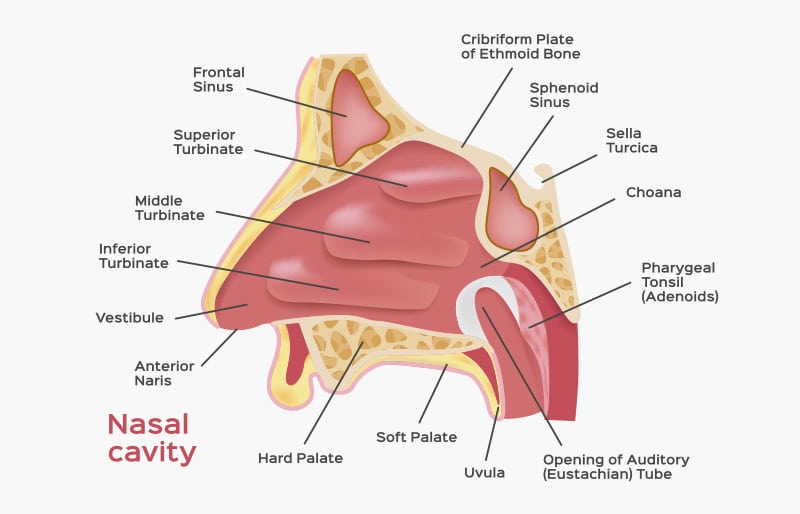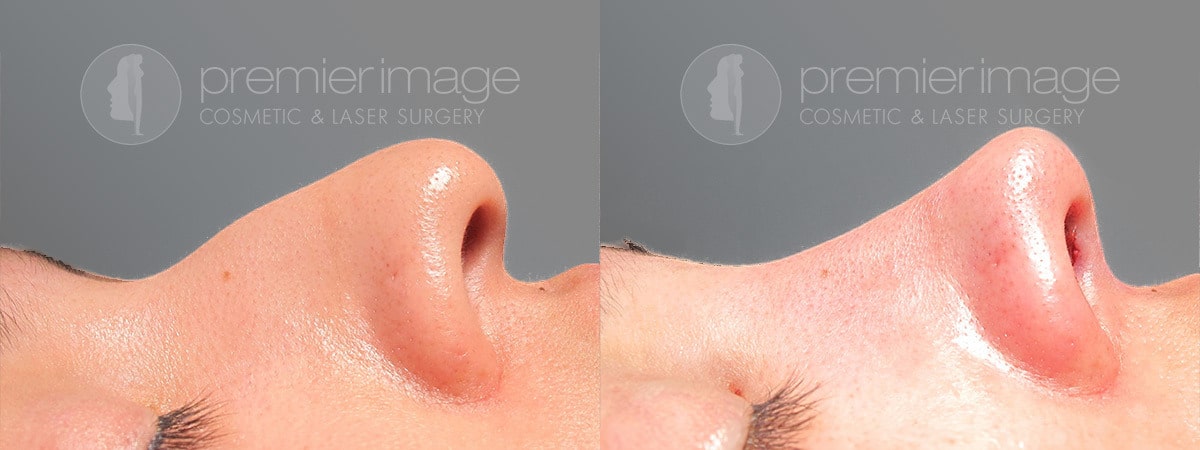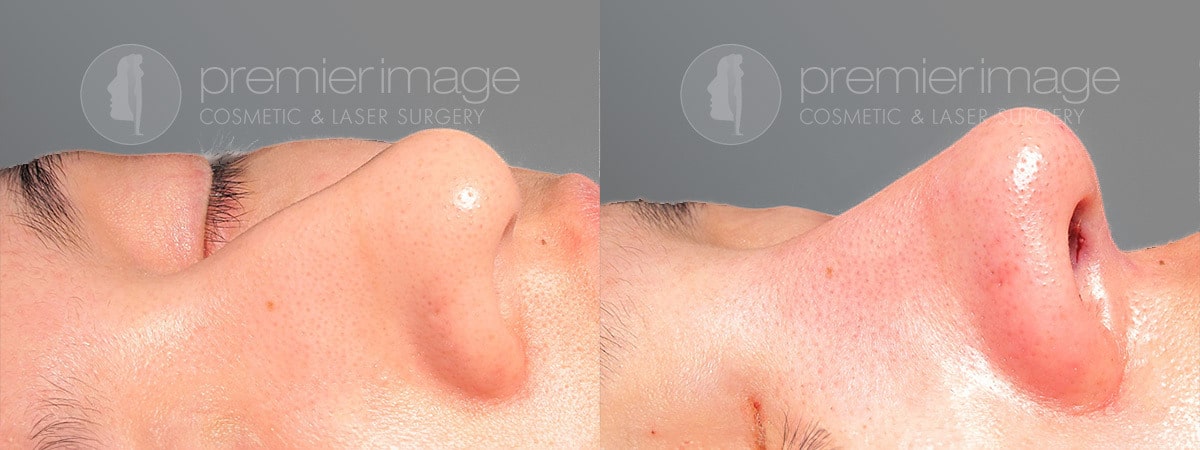Have you ever wondered what really goes into reshaping a nose during rhinoplasty? Understanding the anatomy of the nose is the first step to truly grasping how this transformative procedure works. Whether you’re exploring rhinoplasty for aesthetic or medical reasons, knowing the underlying structures can help you approach your consultation with confidence.
Each part of the nose plays a specific role in its form and function. Learning about these components can help you understand what your surgeon refers to during your evaluation and surgery plan. Let’s explore the essential inner and surface anatomy behind a successful rhinoplasty surgery so you can better visualize the changes ahead.

Nose Anatomy for Rhinoplasty
Understanding nasal anatomy helps you follow along during your rhinoplasty consultation and ensures you know what to expect from your surgical procedure. Your nose consists of bones, cartilage, nasal skin, and soft tissue that shape its appearance and affect its function. Dr. DeJoseph will use these anatomical landmarks to guide surgical adjustments, making it crucial for you to be familiar with these terms and their significance.
Alae
The alae are the soft tissue structures that form the outer walls of the nostrils, contributing to the base width and overall contour of the nose. Unlike other parts of the nose that include bone or cartilaginous structures, the alae are made up of fibro-fatty tissue. Their shape and position play a significant role in nasal aesthetics, particularly when it comes to the appearance of flaring nostrils or nasal base width. In rhinoplasty, modifying the alae can help narrow the nostrils and refine the base of the nose, achieving a more balanced facial appearance.
Columella
The columella is the strip of tissue that separates the two nostrils and plays a central role in nasal structure and aesthetics. It is composed of the medial crura—part of the lower lateral cartilages—which form the supportive base of the nasal tip. The columella provides shape and support, influencing the projection and rotation of the nasal tip. In an open rhinoplasty procedure, a small incision is often made along the columella in a gull-wing shape, allowing the surgeon to access internal nasal structures for more precise adjustments.
Ethmoid Bone
The ethmoid bone is a critical structure located in the upper portion of the nasal septum and forms part of the medial walls of the eye sockets. In rhinoplasty, it plays a supportive role in the overall nasal framework. This bone is often involved when harvesting septal cartilage for grafting, with surgeons preserving around 10mm of dorsal and caudal struts to maintain nasal integrity. Its strategic position and structure make it essential for both nasal function and structural reinforcement during reconstructive efforts.
Frontal Bone
The frontal bone forms the upper portion of the face and the forehead, extending down to connect with the nasal bones. It houses the frontal sinuses and contributes to the contour and projection of the upper face. In rhinoplasty, this bone provides a critical point of reference when evaluating nasal projection and facial harmony. The glabella, a key landmark located centrally between the eyebrows, is part of the frontal bone and influences the visual starting point of the nasal profile.
Frontal Process of the Maxilla
The frontal process of the maxilla is a bony projection that connects the maxilla to both the nasal bones and the frontal bone, forming part of the sidewall of the nose. It plays a key role in shaping the upper third of the nasal structure and contributes to nasal width. During rhinoplasty, this area may be involved in osteotomies—controlled bone cuts used to reshape and reposition the nasal bones. Adjusting this part of the anatomy can significantly influence the width and contour of the nasal bridge.
Glabella
The glabella is the smooth area located between the eyebrows, just above the nasal root. Structurally, it is part of the frontal bone and overlies the frontal sinus. In rhinoplasty, the glabella serves as a critical anatomical landmark for determining the starting point of the nasal dorsum and affects how the nasal profile is evaluated. Its prominence or flatness can influence the perceived height and projection of the nose, and subtle adjustments in this region can enhance facial balance.
Lower Lateral Cartilages
The lower lateral cartilages, also known as the major alar cartilages, shape the tip and lower third of the nose. These cartilages consist of three segments: the medial crura, intermediate (or middle) crura, and lateral crura. Together, they form a structural “tripod” that influences tip projection, rotation, and nostril shape. In rhinoplasty, adjusting the position, orientation, or thickness of these segments can significantly refine the nasal tip. For instance, reducing a high-positioned lateral crura or thinning bulky cartilage can create a more delicate and defined tip.
Maxilla
The maxilla is a foundational facial bone that forms the upper jaw, contributes to the cheek structure, and shapes part of the nasal cavity. In rhinoplasty, the maxilla plays an important role in supporting the base of the nose and influencing nasal projection. It also helps form the anterior portion of the palate and connects with the vomer and palatine bones to create the lower segment of the nasal septum. Understanding its relationship with the nasal bones and septum is key when addressing nasal balance and support.
Nasal Bone
The nasal bones form the upper third of the nose and are responsible for its bony structure and bridge shape. These paired bones connect with the frontal bone and the frontal process of the maxilla, creating the foundation for nasal height and dorsal profile. In rhinoplasty, nasal bones may be reshaped or repositioned through osteotomies to correct asymmetry, reduce width, or refine the nasal contour. Their role is crucial in establishing overall nasal balance and ensuring harmony with the rest of the facial features.
Nasal Bridge
The nasal bridge is the ridge that extends from the radix (located between the eyes) down toward the nasal tip. It represents the most visually prominent part of the nose and reflects the most light, playing a key role in defining the nose’s profile. The bridge is bordered by the nasal sidewalls, which are more shadowed, helping to visually separate and highlight the central ridge. In rhinoplasty, adjustments to the bridge can dramatically influence the overall shape, height, and straightness of the nose.
Nasal Tip
The nasal tip is the most prominent and forward-projecting part of the nose. It serves as the visual focal point of the entire nasal structure and plays a key role in overall facial harmony. Formed primarily by the lower lateral cartilages, the nasal tip’s shape, rotation, and projection significantly affect the aesthetic outcome of a rhinoplasty. Because of its central importance, surgeons must carefully sculpt this area to ensure symmetry, refinement, and balance with other facial features, all while maintaining or improving nasal function.
Palatine Bone
The palatine bone is a small but important structure located toward the back of the nasal cavity. It contributes to the formation of the hard palate, the floor of the nasal cavity, and part of the nasal septum. In rhinoplasty, its relevance lies in its connection to the vomer and maxilla, which together form the posterior and inferior segments of the nasal septum. Understanding this deeper anatomy is essential for structural work and for procedures that involve internal nasal support or septal angle adjustments.
Radix
The radix is the anatomical term for the uppermost part of the nose, located between the eyes, where the nose begins just below the glabella. It marks the transition point from the forehead to the nasal bridge and represents a key landmark for defining the nasal profile. Beneath the surface, the radix corresponds to a bony area, while the nasion refers to the soft tissue point directly over it. Rhinoplasty procedures often adjust the radix to enhance nasal harmony and improve the visual flow from forehead to tip.
Septal Cartilage
The septal cartilage is the central support structure of the nose, located between the nostrils and extending deep into the nasal cavity. It forms a key part of the nasal bridge and plays a major role in determining the shape, projection, and alignment of the nose. In rhinoplasty, this cartilage is often sculpted or repositioned to correct deviations or enhance symmetry. Because it provides much of the nose’s internal anatomy, preserving and supporting the septal cartilage is essential for maintaining both form and function after surgery.
Upper Lateral Cartilages
The upper lateral cartilages form the middle third of the nose and connect directly to the septal cartilage. These structures help define the shape and width of the nasal bridge and are crucial to both nasal appearance and function. In rhinoplasty, the interaction between the upper lateral cartilages and the septum must be carefully managed to maintain an open nasal airway and achieve aesthetic goals. Modifying these cartilages can narrow the middle vault or correct issues like internal valve collapse, which is a common cause of airway obstruction.
Vomer Bone
The vomer bone is a thin, flat bone that forms the posterior and inferior portion of the nasal septum. It connects with the ethmoid bone above and the maxilla and palatine bones below, helping to complete the nasal septal structure. In rhinoplasty, the vomer is sometimes involved when harvesting grafting material or reinforcing the septum. Its structural role is vital in supporting the internal nasal framework and maintaining the straightness and strength of the septum.

Secure Your Safe Procedure Experience with Dr. Louis DeJoseph
Join our satisfied clients who’ve experienced safe, effective treatments.
Orientation Anatomical Terms
To better understand the directions and positions discussed during a rhinoplasty consultation, it’s helpful to become familiar with anatomical orientation terms. These terms provide a standardized way for surgeons to describe the location and direction of nasal structures in relation to the rest of the body. Mastering these basics can enhance your understanding of the surgical plan and help you follow along more confidently.
Dorsum (Dorsal)
The dorsum refers to the ridge or “back” of the nose, extending from the radix down to the nasal tip. It’s the surface most commonly reshaped during rhinoplasty to smooth out bumps—often referred to as a nasal hump—adjust height, or refine the nasal profile. The term “dorsal” is used as an adjective to describe elements located along this ridge. Proper preservation and support of the dorsal area are crucial; otherwise, issues like saddle nose deformity may occur if too much structure is removed.
Caudal
The term “caudal” refers to a direction toward the feet or the lower part of the body. In rhinoplasty, this is often used when discussing the caudal end of the nasal septum. Modifying the caudal septum can shorten the nose or alter the rotation of the nasal tip. It plays a significant role in tip positioning, nasal length, and overall nasal projection.
Cephalic
“Cephalic” refers to a direction toward the head or upper part of the body. In rhinoplasty, the term is often used to describe the orientation of nasal structures, such as the cephalic positioning of the lower lateral cartilages. If these cartilages are positioned too high toward the head, it can lead to an overly rounded nasal tip or upward-curled nostrils. Cephalic trim techniques may be used to refine the tip and achieve a more balanced nasal contour.
Lateral
“Lateral” refers to a position away from the midline of the body. In rhinoplasty, it’s used to describe structures located on the outer sides of the nose, such as the alae or lateral crura.
Ventral
“Ventral” refers to the front or belly side of a structure. In rhinoplasty, it helps describe the surface facing outward from the nasal framework.
Medial
“Medial” describes a position closer to the midline of the body. In rhinoplasty, it’s often used when referring to structures near the center of the nose, such as the septum.
Superior
“Superior” refers to a position above or closer to the head. In rhinoplasty, it helps describe structures higher up on the nose or face.
Inferior
“Inferior” indicates a position below or closer to the feet. It’s often used to describe lower nasal structures, such as the base or tip.
Before and After Photos


* Each patient is unique and individual results may vary.
Work With an Expert Rhinoplasty Surgeon
Choosing the right surgeon for your rhinoplasty is essential to achieving natural-looking results that align with your facial features. A highly skilled facial plastic surgeon understands the delicate anatomy of the nose and how each adjustment impacts not only appearance but also breathing and functionality. Nose surgery, from primary rhinoplasty to revision rhinoplasty, requires precision, experience, and a keen aesthetic eye—qualities only a seasoned expert can provide.
Premier Image Cosmetic & Laser Surgery is Atlanta’s first cosmetic surgery practice center dedicated to both facial and body aesthetic procedures, including reconstructive surgery. Since 1970, we’ve set the standard for excellence by combining cutting-edge techniques with a deeply personalized approach to care. Our board-certified surgeons bring over 30 years of combined experience to every consultation and procedure, ensuring natural-looking results backed by expert skill and compassion. Call us today at 770-457-6303 or visit our contact page to schedule your consultation.